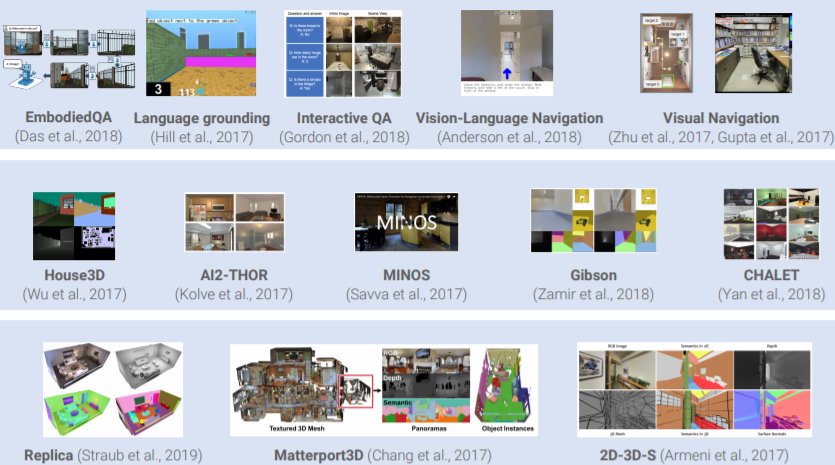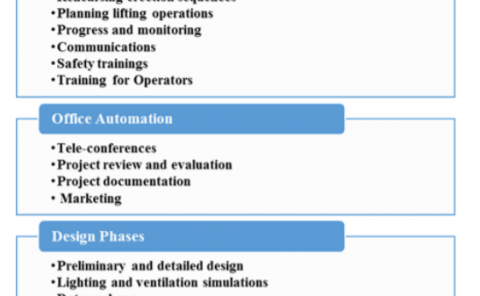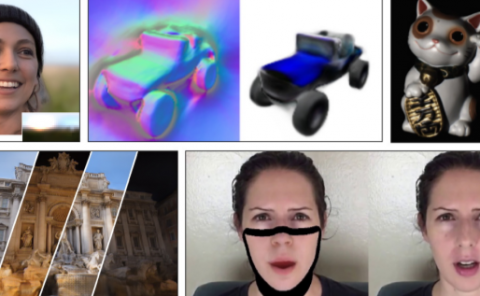Habitat: A Platform for Embodied AI Research
Title: Habitat: A Platform for Embodied AI Research
Teams: Facebook
Writers: Manolis Savva, Abhishek Kadian, Oleksandr Maksymets, Yili Zhao, Erik Wijmans, Bhavana Jain, Julian Straub, Jia Liu, Vladlen Koltun, Jitendra Malik, Devi Parikh, Dhruv Batra
Publication date: October 27, 2019
Abstract
We present Habitat, a platform for research in embodied artificial intelligence (AI). Habitat enables training embodied agents (virtual robots) in highly efficient photorealistic 3D simulation. Specifically, Habitat consists of: (i) Habitat-Sim: a flexible, high-performance 3D simulator with configurable agents, sensors, and generic 3D dataset handling. Habitat-Sim is fast – when rendering a scene from Matterport3D, it achieves several thousand frames per second (fps) running single-threaded, and can reach over 10,000 fps multi-process on a single GPU. (ii) Habitat-API: a modular high-level library for end-to-end development of embodied AI algorithms – defining tasks (e.g. navigation, instruction following, question answering), configuring, training, and benchmarking embodied agents.
These large-scale engineering contributions enable us to answer scientific questions requiring experiments that were till now impracticable or ‘merely’ impractical. Specifically, in the context of point-goal navigation: (1) we revisit the comparison between learning and SLAM approaches from two recent works and find evidence for the opposite conclusion – that learning outperforms SLAM if scaled to an order of magnitude more experience than previous investigations, and (2) we conduct the first cross-dataset generalization experiments {train, test} × {Matterport3D, Gibson} for multiple sensors {blind, RGB, RGBD, D} and find that only agents with depth (D) sensors generalize across datasets. We hope that our open-source platform and these findings will advance research in embodied AI.




